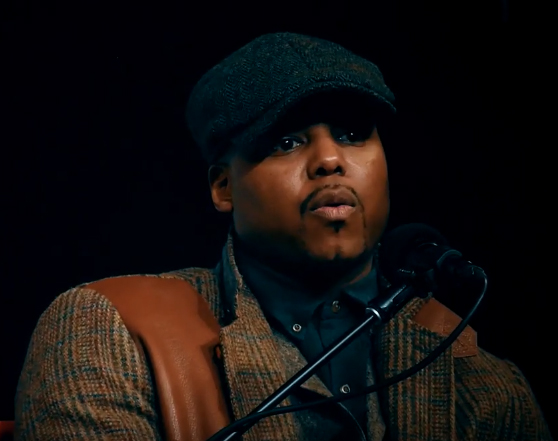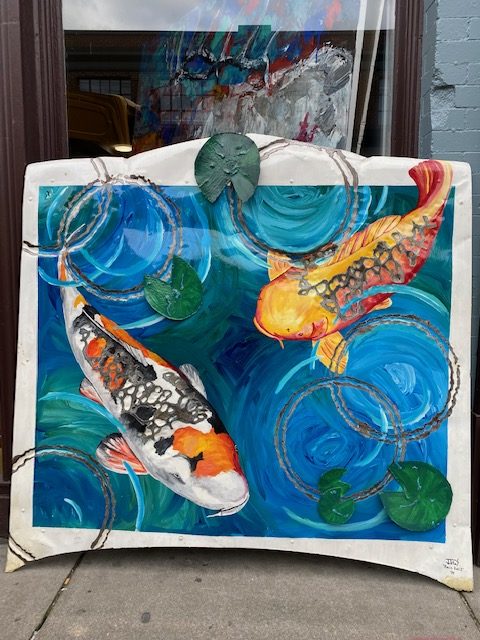
The work of contemporary artist Titus Kaphar reflects the legacy and ancestry of African American representation. It is unsurprising that Kaphar has distinguished himself amongst historically-referenced artists around the world, using his poignant referencing and powerful narrative imagery to give his viewers the singular perspective that he wishes to showcase.
Kaphar’s range of artwork spans various styles, genres and media, including sculptures, paintings and installations. The most striking feature about his unique approach to art is the rawness and physicality of his process, which involves manipulating and distorting his paintings, cutting and ripping up parts of the canvas itself with an almost performative grandiosity, making this transfiguration an integral part of the finished piece. As part of another technique, he douses his painting in white before covering it with black tar, in this case symbolizing silenced and repressed black voices.
Kaphar’s unique approach to art has received international critical acclaim for its originality and inventiveness. And yet, despite the powerful messaging, at the core of each Titus Kaphar piece is honesty and raw introspection. In his own words, “I make paintings that people perceive often as being very social or political. But for the most part they are all very personal. Everything stems from my relationship to a situation, to a narrative, to a story.”
Kaphar’s acclaimed painting series The Jerome Project is a noteworthy example of the artist’s proclivity for painting subjects that have made an impact on him. The series, which debuted in November 2014 at the Studio Museum in Harlem, was inspired by the artist’s research into the lives of men who had served time in prison, like Kaphar’s father. With his signature black tar technique, he coated a portion of each mugshot with black, representing the time they had served.
In another celebrated artwork, an installation titled The Vesper Project, Kaphar created a scene of an abandoned home belonging to the Vesper family, inspired by his correspondence with Benjamin Vesper. During a psychotic break spurred by the psychological burden of the family secrets he harbored, Vesper had attacked one of Kaphar’s paintings at the Yale Art Gallery and was arrested and admitted to Connecticut Valley Hospital. He later corresponded with Kaphar via letters and recounted the story of his 19th century Vesper family ancestors who passed for white, but due to their mixed heritage were considered black by law.
Kaphar was awarded the prestigious Gwendolyn Knight and Jacob Lawrence fellowship from the Seattle Art Museum in 2009, and would later also receive the MacArthur Fellowship in 2018. After getting an MFA from the Yale School of Art, Kaphar would also later receive numerous art grants, including the Art for Justice Fund grant, the Robert R. Rauschenberg Artist as Activist grant, as well as a Creative Capital grant. His work has been featured in the likes of the Museum of Modern Art, Brooklyn Museum, Seattle Art Museum, Crystal Bridges Museum of American Art, the Metropolitan Museum of Art, the Yale University Art Gallery and many more.
Citizen University, CC BY 3.0, via Wikimedia Commons
